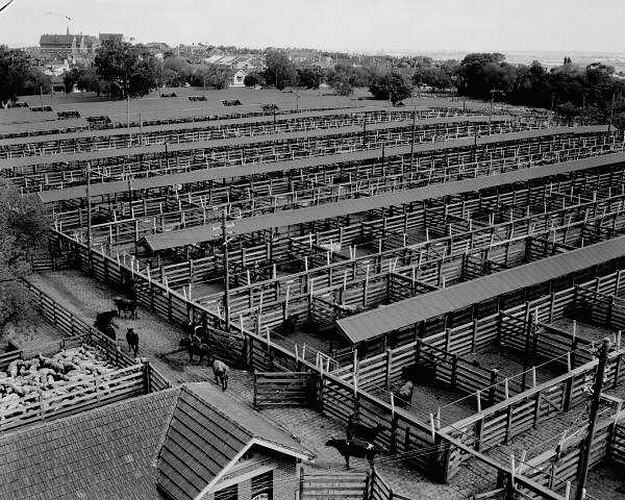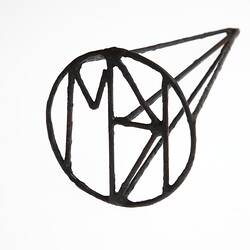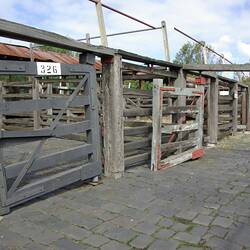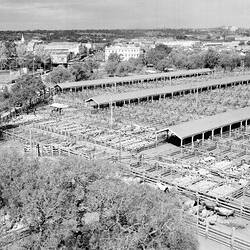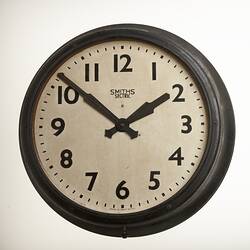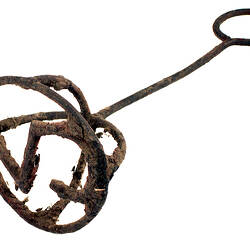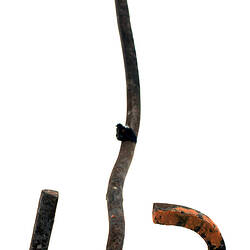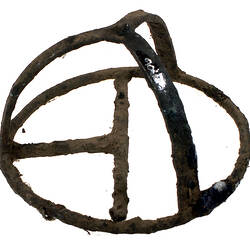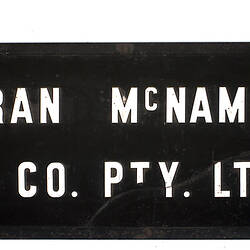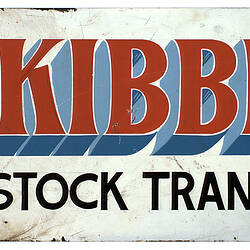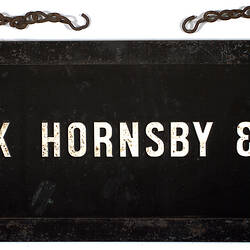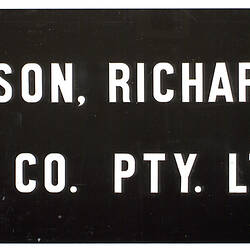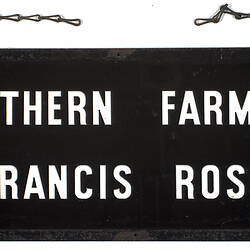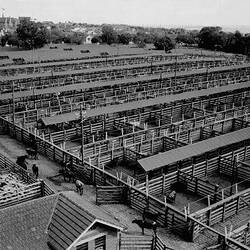By 1840 the city of Melbourne was nearly five years old. Population growth in Melbourne and the surrounding countryside had been steady and was around 10,000. During the following decade, gold was discovered, people flooded into Victoria and the population rapidly expanded. By 1851 the Victorian population was nearly 100,000; within ten years this rose to over 500,000. The 'gold rush' era saw Victoria evolve from a sheep grazing economy based around squatters, to an emerging industrial base, with great pastoral wealth and extensive mercantile enterprises.
In these early days, the city of Melbourne was a hive of industry and a mixture of cattle yards, milking sheds, stables, horse bazaars, huts and merchandise stores. Livestock such as cattle, sheep, pigs, horses and goats were first sold and traded at various taverns, inns, hotel yards and livery stables. The Argus on June 2, 1846 announced sale results by Messrs. Bear and Sons noting "the demand for fat cattle this week was more than equal to the supply, and prices shew [sic] a slight advance on last week's operations. There has been a fair supply of fat wethers, and prices remain firm, at about 2d. per lb. Store Cattle sold well." While notices on the same day by Thomas Kissock announce " Eighty-one fat cattle, one hundred and seventy lean, two working bullocks and one thousand five hundred and ninety sheep, have last week been sold in the Market yards at the different sales."
As livestock markets grew and were scattered throughout the growing colony, demand escalated for a regulated livestock market. Before the incorporation of the City of Melbourne on August 12, 1842, a Markets' Commission had already been appointed to establish a regular "fat stock" market in Melbourne, where livestock that is fat and ready for market could be traded. According to the minute book of the Markets' Commission, Melbourne's first municipal livestock marketplace was first opened on February 9, 1842 at an indeterminate "site on Sydney Road". It is likely that this is the current site of the Queen Victoria Market on the corner of Elizabeth Street north and Victoria Street. During this period, slaughter houses were located on Yarra Bank land at the foot of Batman's Hill (10 acres near Southern Cross Station); and Batman's Swamp (current site of World Trade Centre). On April 10, 1849, residents put forward a proposal to the Market Committee to erect public abattoirs in an appropriate, central location. The Trustees of Flemington Racecourse agreed to provide land on the Maribyrnong River for the siting of abattoirs and cattle yards.
At this time, the Maribyrnong River valley had been home for the Wurundjeri people of the Kulin nation for up to 40,000 years. The Maribyrnong River was initially known as 'Saltwater River' by early European settlers due to the tidal nature of its lower reaches. From 1830s European settlement in the Newmarket area had developed slowly, impeded by the physical environment. The area was found to be sandy, with marshy and low-lying infertile ground. The river at this point was shallow and fairly narrow and unnavigable, and its salty nature deemed it unsuitable for domestic purpose or irrigation. Lacking great depth and width to accommodate occasional excessive volumes of water, this part of the river was also prone to flooding. The land was utilised for sheep and cattle grazing and on August 30, 1856, a Crown grant was made to Melbourne City Council for a 24 acre site to be developed for the Newmarket Saleyards in the Doutta Galla Province of Melbourne.
Establishment of Newmarket Saleyards introduced an organised system of livestock auctioning for cattle, sheep, pigs and horses. The livestock market developed into a livestock industry and rapidly flourished, as did the need for drovers, stock and station agents, import and export agents, commission agents, bloodstock agents, cattle salesmen, cattle dealers, auctioneers, wool-brokers and cattle brokers. Until the mid 1970s, stock was sold at auction at Newmarket by open cry on a 'dollars per head' basis. The most significant change in the history of livestock marketing in Victoria was the introduction of liveweight selling of cattle at Newmarket in 1975, whereby cattle were weighed and auctioned on a 'cents per kilogram' liveweight basis. Liveweight selling was recognised as an objective measurement of stock and expanded rapidly into all regional selling centres across Australia. With the introduction of liveweight selling some modern pens and walkways were introduced to Newmarket Saleyards where a visual display flashed the price per kilogram of the beasts as they were auctioned.
References:
Australian Bureau of Statistics, 2008, Australian Historical Population Statistics (cat. no. 3105.0.65.001), viewed 26/07/10.
'Commercial Intelligence - Cattle Market', 1846, The Argus, 2 June, page 2.
More Information
-
Keywords
agricultural industry, Cultures and histories : Melbourne and Victoria, city & town life, country life
-
Authors
-
Article types
